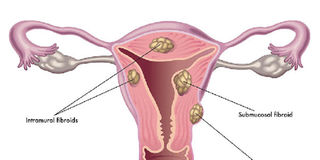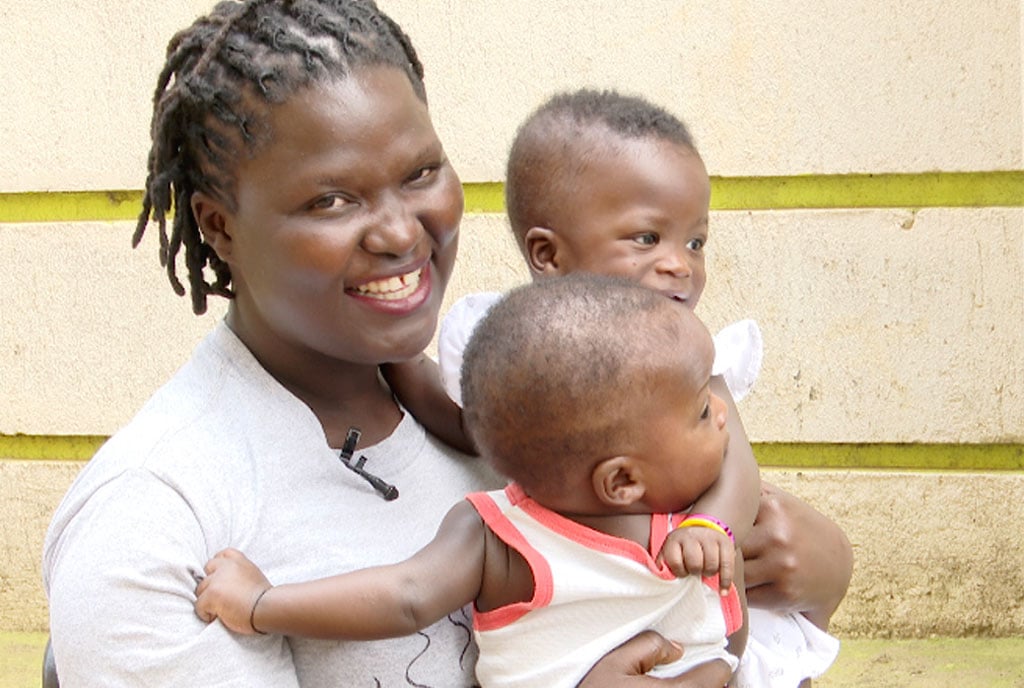Prime
Delaying childbirth could cause fibroids

Fibroids are non-cancerous tumours that grow in and around the uterus. PhOTO/COURTESY/HEALTHDIRECT.
What you need to know:
- Treatable: Many people have fibroids with no symptoms, whereas others experience pain, bleeding, or both.
- This article provides an overview of fibroids, including their effects on the body, causes, and treatment options.
There is so much talk about fibroids especially among women of a certain age. During a gynaecology visit, after experiencing pain, radio personality Robina Mbabazi Mulera aka Biina Baby found out she had fibroids.
The doctor told her that she had been unable to conceive because the fibroids were at the mouth of her uterus. While talking to friends, they told her she did not have to undergo surgery because they knew herbalists who would be able to treat her using just herbs.
Mbabazi was relieved by this news and started taking the herbs. “Two years down the road, I realised I was getting worse. My period was getting heavy and the pain in my lower abdomen was getting so intense that at times I was unable to sit down,” says Mbabazi.
After a while, Mbabazi got to learn that one of her relatives who was also on the same treatment opted for surgery after a check-up at the hospital discovered her situation had escalated, so she made up her mind to do the same.
She also discovered that she could not immediately have the surgery because the heavy period had lowered her blood count.
“The surgery gave me a lot of relief although I took long to heal. I was once again able to sit down during my period without pain and my flow normalised,” says Mbabazi.
With the removal of the fibroids, Mbabazi’s bulging tummy disappeared and she was told she could now conceive.
What are fibroids?
Fibroids are tumours that are detected in the reproductive system of a woman. The tumours may range in size, from the size of a pea to the size of a small grapefruit and can cause heavy periods, pelvic pressure, bloating, urinary frequency, and constipation.
According to Dr Peter Kungu, a general practitioner at Mulago Hospital for women in Kawempe, the longer a woman takes without conceiving from the time they start menstruating, the more chances they have of developing fibroids.
“This is because when the uterus, which was made for carrying babies, does not do that for a long time, it makes a replica of what feels like it is carrying something. That includes fibroids. Some of these fibroids are benign and others can be cancerous,” says Dr Kungu.
The doctor says it can sometimes be hereditary. “If one of the family members had the complication, it may be passed down to the offspring,” he says.
Symptoms
Dr Kungu urges women, especially those above the age of 30, that are having complications in their lower abdomen to to seek medical attention immediately.
Symptoms of fibroids may include heavy bleeding between or during your periods that includes blood clots, pain in the pelvis or lower back, increased menstrual cramping, increased urination and pain during intercourse.
Others include menstruation that lasts longer than usual, pressure or fullness in your lower abdomen and swelling or enlargement of the abdomen.
Treatment
Once diagnosed, the doctor will determine whether one is viable for surgery or not. Treatments can vary from monitoring to a hysterectomy (a standard surgical procedure that involves the complete or partial removal of the uterus) and will vary depending on the patient’s age, symptoms, previous treatments and successes, and desire to have children.
One of the latest treatments for fibroid is Uterine Fibroid Embolization (UFE). UFE is a non-surgical way of treating fibroids by blocking off the arteries that feed the fibroids, the uterine arteries, and making the fibroids shrink. It is performed by an interventional radiologist, rather than a surgeon, and is an alternative to an operation.
According to Dr Hassan Kabiito, a neurovascular interventional radiologist, the insertion of a catheter (through which medicine is transmitted) is started from the thigh region or wrist to the uterine artery that transmits blood to the fibroid itself, blocking its access to the blood that supports its growth, shrinking it until it is no more. Thereafter, the patient will return to hospital for observation every three months.

Your doctor will determine whether you need surgery or not. PHOTO/PROMISE TWINAMUKYE.
Dr Kungu stresses that this treatment is not an option for patients with extremely large fibroids who still want to have children. It may also not work for expectant mothers since the baby needs all the blood and nutrients they can get.
The position of the fibroid also matters because if it is in the ovary, the fertility rate of the woman may be lowered, the reason it is important to know if one still has the desire to have children.
Cost
For someone who has bigger fibroids and they still want to give birth, there are injections given once every month for four months to deflate the fibroids for easy surgery, according to Dr Kungu. However, these drugs cost more than Shs400,000 per injection.
According to Peter Mulindwa, a marketing and communication manager at IHK hospital, Kampala, embolization costs between Shs5m, and Shs7m depending on the size of the fibroid. The scanning then may cost around Shs60,000 depending on where one goes.
According to Mbabazi, the surgery cost her about Shs7m, which she says was made easier since she had health insurance.
Stats
As many as one in five women may have fibroids during their childbearing years. It is estimated that 20-30 per cent of women above the age of 30 years harbour fibroids, which account for 3.2-7.6 per cent of new gynaecological cases and 68.1 per cent of all hysterectomies (A.P Aboyeji, Nigerian Journal of Medicine 2002).
Worldwide estimates suggest that three out of four women will have one or more fibroids at some point in their lives (Mayo Clinic Foundation 2009).




